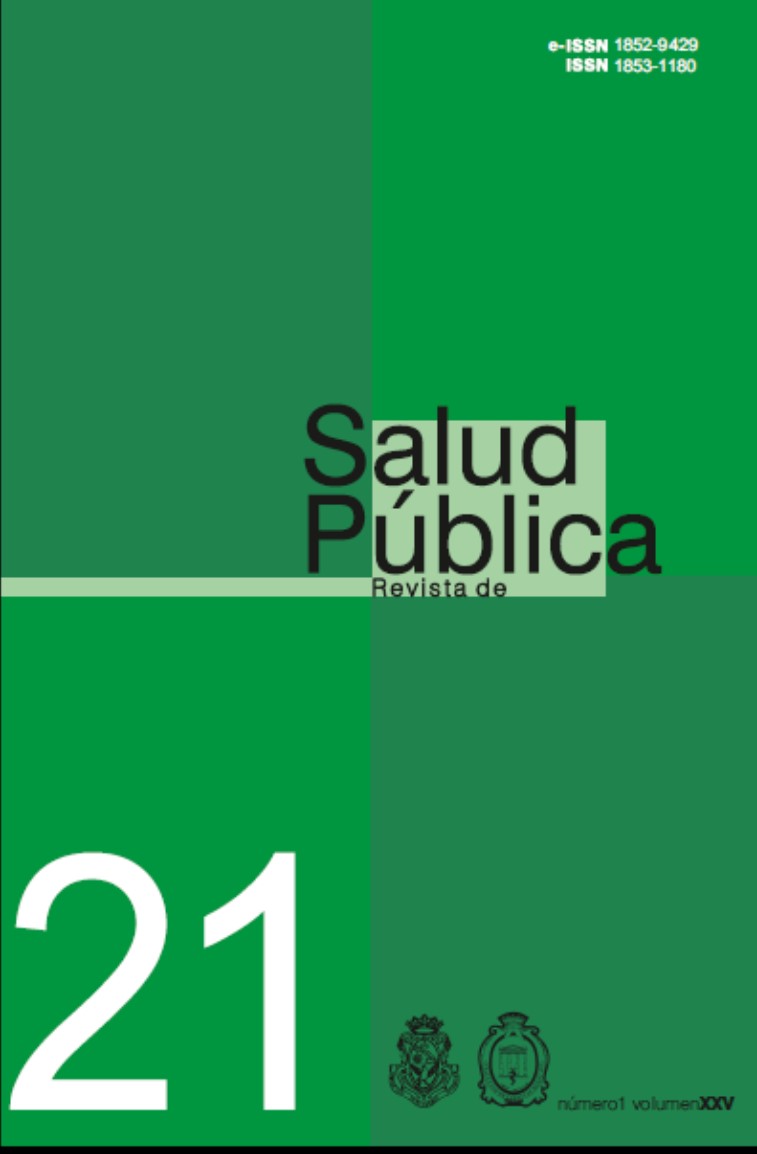PANDEMIC AND EMOTIONS: ANALYSIS OF EMOTIONS EXPRESSED ON TWITTER DURING THE COVID-19 PANDEMIC IN MEXICO CITY
Keywords:
COVID-19, emotions, mental health, pandemics, data scienceAbstract
This study aims to explore the emotions of users of a social network, in Mexico City, in the context of the COVID-19 pandemic. The contributions of this study are focusedon providing tools for the design of population mental health strategies, as an effort to mitigate the consequences of the current health crisis
Downloads
References
Saleh SN, Lehmann CU, McDonald SA, Basit MA, Medford RJ. Understanding public perception of coronavirus disease 2019 (COVID-19) social distancing on Twitter. Infection Control & Hospital Epidemiology. 2021;42(2):131–8.
Sallam M, Dababseh D, Yaseen A, Al-Haidar A, Ababneh NA, Bakri FG, et al. Conspiracy beliefs are associated with lower knowledge and higher anxiety levels regarding COVID-19 among students at the University of Jordan. Int J Environ Res Public Health. 2020; 17:4915.
Su Y, Xue J, Liu X, Wu P, Chen J, Chen C, et al. Examining the impact of COVID-19 lockdown in wuhan and Lombardy: a psycholinguistic analysis on Weibo and Twitter. Int J Environ Res Public Health. 2020;17(12):4552.
Xue J, Chen J, Chen C, Zheng C, Li S, Zhu T. Public discourse and sentiment during the COVID 19 pandemic: using latent dirichlet allocation for topic modeling on Twitter. PLoS ONE. 2020;15(9): e0239441.
Xue J, Chen J, Hu R, Chen C, Zheng C, Su Y, Zhu T. Twitter Discussions and emotions about the COVID-19 Pandemic: Machine Learning Approach. J Med Internet Res. 2020;22(11):e20550.
Karmegam D, Mapillairaju BWhat people share about the COVID-19 outbreak on Twitter? An exploratory analysis. BMJ Health & Care Informatics 2020;27:e100133.
Kurten S, Beullens K. #Coronavirus: monitoring the Belgian Twitter discourse on the severe acute respiratory syndrome coronavirus 2 pandemic. Cyberpsychol Behav Soc Netw. 2021;24(2):117-122.
Lee H, Noh EB, Choi SH, Zhao B, Nam EW. Determining public opinion of the COVID-19 pandemic in South Korea and Japan: social network mining on Twitter. Healthc Inform Res. 2020;26(4):335-343.
Li Y, Zeng Y, Liu G, Lu D, Yang H, Ying Z, Hu Y, Qiu J, Zhang C, Fall K, Fang F, Valdimarsdóttir UA, Zhang W, Song H. Public awareness, emotional reactions and human mobility in response to the COVID-19 outbreak in China - a population-based ecological study. Psychol Med. 2020;1-8.
Lwin MO, Lu J, Sheldenkar A, Schulz PJ, Shin W, Gupta R, Yang Y. Global sentiments surrounding the COVID-19 pandemic on Twitter: analysis of Twitter trends. JMIR Public Health Surveill. 2020;6(2):e19447.
Park HW, Park S, Chong M. Conversations and medical news frames on Twitter: infodemiological study on COVID-19 in South Korea. J Med Internet Res. 2020;22(5):e18897.
Saha K, Torous J, Caine ED, De Choudhury M. Psychosocial effects of the COVID-19 pandemic: large-scale quasi-experimental study on social media. J Med Internet Res. 2020 ;22(11):e22600.
Caldera-Villalobos C, Garza-Veloz I, Martínez-Avila N, Delgado-Enciso I, Ortiz-Castro Y, Cabral-Pacheco GA et al. The coronavirus disease (COVID-19) challenge in Mexico: a critical and forced reflection as individuals and society. Front Public Health. 2020; 8:337.
Devi S. COVID-19 exacerbates violence against health workers. Lancet. 2020; 396(10252):658.
Chehal D, Gupta P, Gulati P. COVID-19 pandemic lockdown: an emotional health perspective of Indians on Twitter. Int J Soc Psychiatry. 2021; 67(1):64-72.
Dong W, Tao J, Xia X, Ye L, Xu H, Jiang P et al. Public emotions and rumors spread during the COVID-19 epidemic in China: web-based correlation study. J Med Internet Res. 2020; 22(11):e21933.
Dubey AD. The resurgence of cyber racism during the COVID-19 pandemic and its aftereffects: analysis of sentiments and emotions in Tweets. JMIR Public Health Surveill. 2020; 6(4):e19833.
Fan L, Yu H, Yin Z. Stigmatization in social media: Documenting and analyzing hate speech for COVID-19 on Twitter. Proc Assoc Inf Sci Technol. 2020;57(1):e313.
Hung M, Lauren E, Hon ES, Birmingham WC, Xu J, Su S, Hon SD, Park J, Dang P, Lipsky MS. Social network analysis of COVID-19 sentiments: application of artificial intelligence. J Med Internet Res. 2020; 22(8):e22590.
Karmegam D, Mapillairaju B. What people share about the COVID-19 outbreak on Twitter? An exploratory analysis. BMJ Health Care Inform. 2020; 27(3):e100133.
Kurten S, Beullens K. #Coronavirus: Monitoring the Belgian Twitter Discourse on the Severe Acute Respiratory Syndrome Coronavirus 2 Pandemic. Cyberpsychol Behav Soc Netw. 2021; 24(2):117-122.
Dong W, Tao J, Xia X, Ye L, Xu H, Jiang P et al. Emotions and rumors spread during the COVID-19 epidemic in China: web-based correlation study. J Med Internet Res. 2020; 22(11):e21933.
Abd-Alrazaq A, Alhuwail D, Househ M, Hamdi M, Shah Z. Top Concerns of Tweeters During the COVID-19 Pandemic: Infoveillance Study. J Med Internet Res. 2020; 22(4):e19016.
Arora A, Chakraborty P, Bhatia MPS, Mittal P. Role of Emotion in Excessive Use of Twitter During COVID-19 Imposed Lockdown in India. J Technol Behav Sci. 2020; 1-8.
Chehal D, Gupta P, Gulati P. COVID-19 pandemic lockdown: An emotional health perspective of Indians on Twitter. Int J Soc Psychiatry. 2021; 67(1):64-72.
Downloads
Published
Issue
Section
License
Copyright (c) 2021 Escuela de Salud Pública y Ambiente. Facultad de Ciencias Médicas. Universidad Nacional de Córdoba

This work is licensed under a Creative Commons Attribution-NonCommercial 4.0 International License.
Authors who publish with this journal agree to the following terms:
- Authors retain copyright and grant the journal right of first publication with the work simultaneously licensed under a Creative Commons Attribution License which allows the work to be copied, distributed, exhibited and interpreted as long as it is not done for commercial purposes.
- Authors are able to enter into separate, additional contractual arrangements for the non-exclusive distribution of the journal's published version of the work (e.g., post it to an institutional repository or publish it in a book), with an acknowledgement of its initial publication in this journal.
- Authors are permitted and encouraged to post their work online (e.g., in institutional repositories or on their website) after the publication process. (See The Effect of Open Access). (See The Effect of Open Access).



